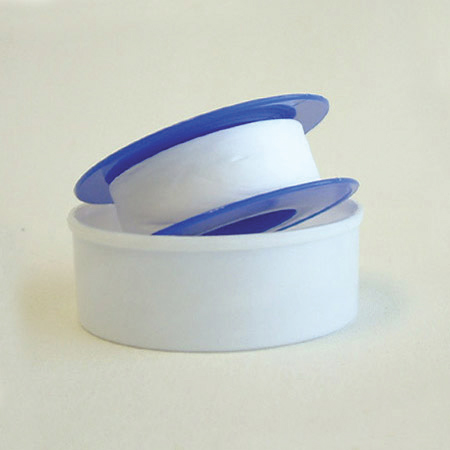PTFE Thread Seal Tape is a novel and ideal sealing material. Due to its non-toxic, odorless, excellent sealing, insulation and corrosion resistance, it is widely used in water treatment, natural gas, chemical industry, plastics, electronic engineering and other fields. PTFE Thread Seal Tape is a commonly used auxiliary product in the installation of liquid pipelines. It is used at the joints of pipe fittings to enhance the tightness of the pipe joints. First, remove foreign matter from the parts where the PTFE Thread Seal Tape is to be connected; wrap it inward along the outer edge of the pipe opening.
Pay attention to the winding direction, taking the Angle valve as an example, when the Angle valve is screwed into the inner thread of the wall, it is rotated clockwise to the right, then the direction of the PTFE Thread Seal Tape wrapped on the Angle valve is wound counterclockwise to the left, so that the Angle valve will be tightened more and more tightly, and will not be loosened. During the winding process, pay attention to the smooth PTFE Thread Seal Tape to ensure that the wire is completely wrapped by the PTFE Thread Seal Tape.

When wrapping, pull the PTFE Thread Seal Tape tightly, so that the PTFE Thread Seal Tape is tightly attached to the thread, as tight as possible, do not loose, after wrapping, use the hand to press tightly, you can also press while wrapping. Wrap 2-3 turns, and the edge of the wire is slightly thicker than the PTFE Thread Seal Tape inside the wire.
As for the winding "several layers" there is no mandatory regulation, to be tightened, no leakage prevail, but according to experience, it is usually necessary to wrap more than a dozen laps to ensure the sealing effect. After wrapping, pinch the ring with your hand to make the wire fit perfectly.
When screwing the thread, do not screw to the end, not necessarily screw to really screw not to leak, as long as the feel can eat strong when screwing. In addition, pay attention to the depth of screwing in, such as the two curved feet of the hot and cold water mixing valve to the wire, when screwing, pay attention to maintaining the same distance from the wall, especially in the case of inconsistent depth of the two inner wire elbows in the wall. Hold the wrapped connector and twist it in place in a clockwise direction.


